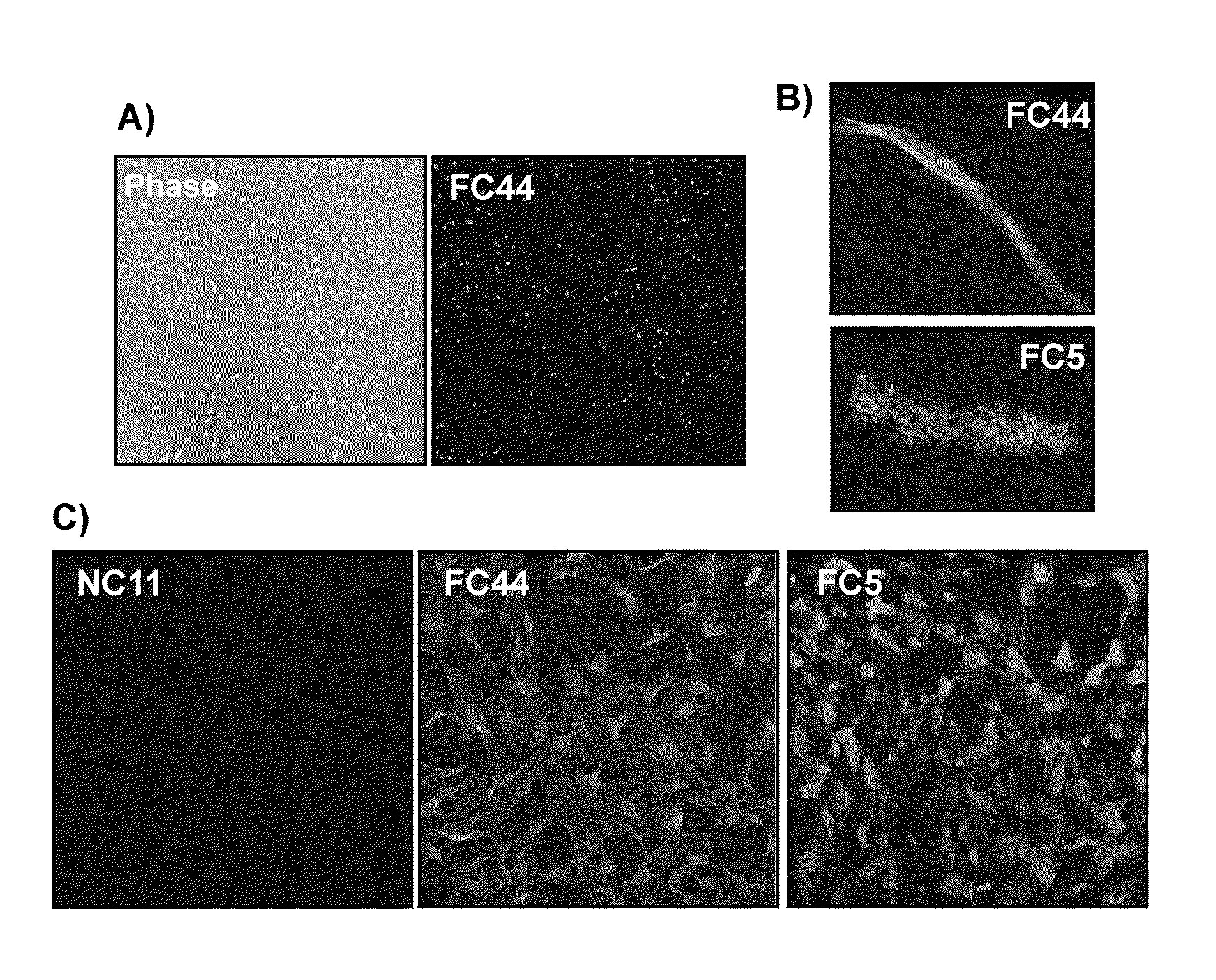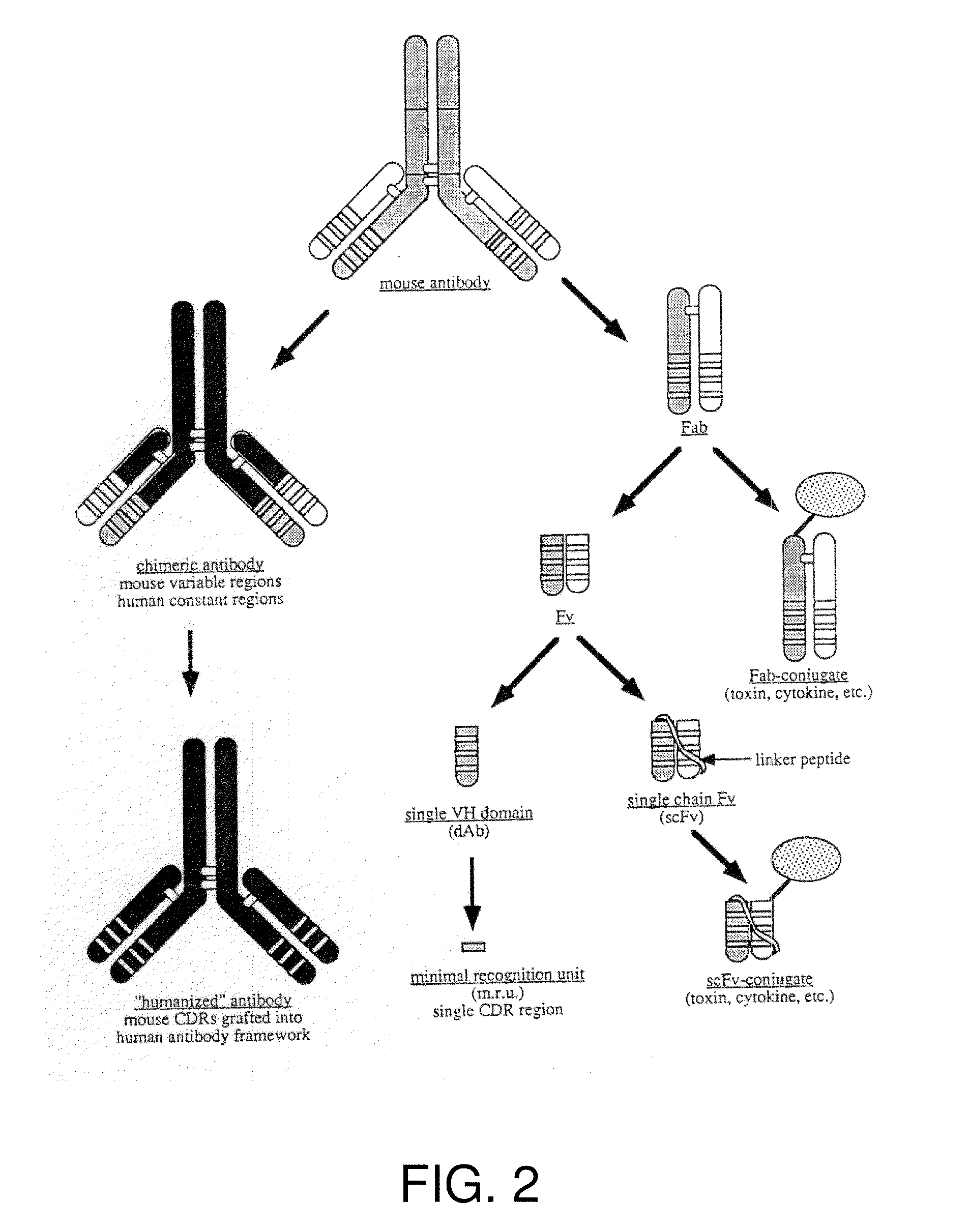Single-domain brain-targeting antibody fragments derived from llama antibodies
a single-domain, antibody technology, applied in the direction of antibody medical ingredients, pharmaceutical active ingredients, peptide/protein ingredients, etc., can solve the problems of plethora of compounds with demonstrated efficacy in vitro that cannot be used as brain-targeting pharmaceutical agents in vivo, and cannot improve the penetration of drug(s) into the brain
- Summary
- Abstract
- Description
- Claims
- Application Information
AI Technical Summary
Problems solved by technology
Method used
Image
Examples
Embodiment Construction
[0041]In the following, positions of amino acid residues in antibodies and antibody fragments are indicated according to the Kabat numbering.
[0042]The present invention uses a large size (in the order of 109) phage display library of single-domain fragments of variable heavy domains (VH and VHH) of llama antibodies. The library, which has been generated using lymphocytes of a non-immunized animal (naïve library), can be used for in vitro selection against any antigen of interest as a target. The size of the library makes it highly probable that an antibody specific to the intended target will be identified among the library's sdAb fragments.
[0043]The choice of a naïve library as the source of llama antibodies was based in part on the fact that the immune system of camelids has evolved over time in harsh environments and that its unique physiological and morphological features have helped the camelids to withstand water scarcity, adapt to climate extremes and develop a natural resist...
PUM
 Login to View More
Login to View More Abstract
Description
Claims
Application Information
 Login to View More
Login to View More - R&D
- Intellectual Property
- Life Sciences
- Materials
- Tech Scout
- Unparalleled Data Quality
- Higher Quality Content
- 60% Fewer Hallucinations
Browse by: Latest US Patents, China's latest patents, Technical Efficacy Thesaurus, Application Domain, Technology Topic, Popular Technical Reports.
© 2025 PatSnap. All rights reserved.Legal|Privacy policy|Modern Slavery Act Transparency Statement|Sitemap|About US| Contact US: help@patsnap.com



